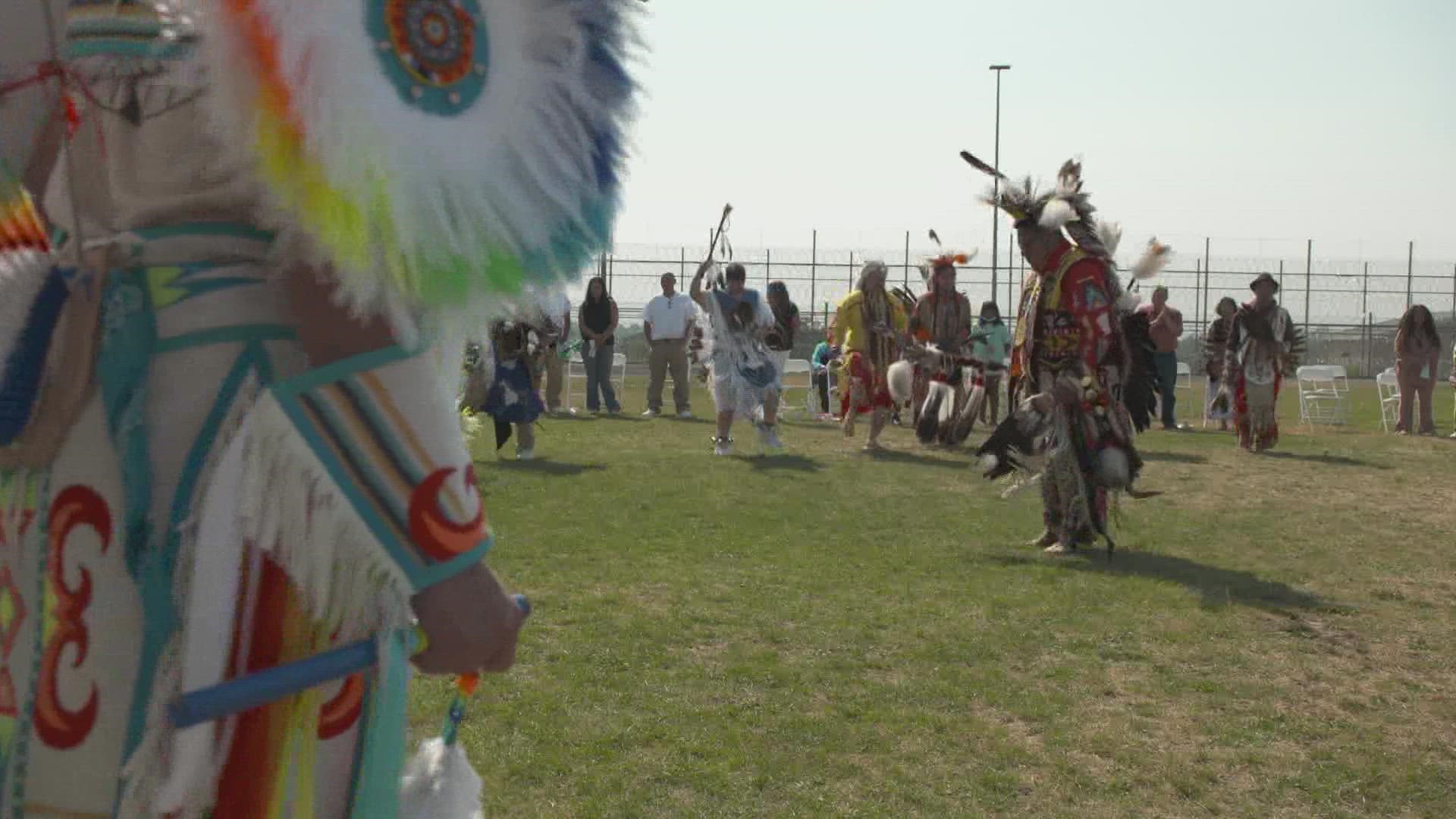WALLA WALLA, Wash. — Head four hours east of Seattle across the ancestral lands of the Cayuse, Umatilla and Walla Walla people and you’ll eventually see a sign that reads “prison boundary.” It's a place where some tribal members spend days thinking about what they’ve lost, daydreaming of freedom.
“I came in pretty angry. I’ve come a long way,” said Tallon Saluskin.
Saluskin is a member of the Yakama Nation and an inmate of the Washington State Penitentiary. For Saluskin and dozens of other Native American inmates, this is an extraordinary day in prison.
For the first time in nearly three years, inmates of the Washington State Penitentiary in Walla Walla hosted a traditional Native powwow with family and friends as guests. It’s part religious ceremony part celebration.
“While we’re in here, we take advantage of this, and we put our culture all the way up and we learn our ways, and we give back to our community for everything we’ve taken, you know,” Saluskin said.
In many cases what they’ve taken they can’t replace.
Anthony Lewis is a tribal member who was convicted of murder in 2016. A KIMA news camera in the courtroom captured his emotional plea to the court and the surviving family members of the man he was convicted of killing.
“With all my heart, on my knees, I beg you guys to forgive me. They say it was a choice, I say addiction is something that I don’t wish on nobody. I’m sorry,” Lewis said.
That was six years ago. Now, he finds healing and repentance in long-founded tribal traditions.
“Everything that we’ve done is one bead at a time. You know what I mean? Just like one step at a time, it’s what we do,” Lewis said.
Lewis has sobered up and softened – a gentle personality that’s revealed when his family is present. His adult daughter and young grandchild attended the prison’s powwow. A visit that was especially powerful as most in-person visitations were canceled as a result of the COVID-19 pandemic.
The powwow came back to the state penitentiary with the help of Jeremy Garretson, a convicted felon turned mentor for recently released prisoners. He worked with the Department of Corrections to make the celebration a reality.
“Being able to have a moment to brush all of that off, and ignore where we are and have a moment with your family, and look your loved ones in the eye and be together, it’s priceless,” Garretson said.
His life’s mission is to keep these men from ever going back.
“Native Americans may not have the highest population per capita in this facility but they have the highest recidivism rate amongst their ethnic and cultural groups – our people are perpetually coming back and coming back and it has to stop,” Garretson continued.
State records show Native American inmates have the highest recidivism rate of any demographic. For the general population, 32% will re-offend within three years, but for Native American inmates, the rate is 45.3%.
Garretson knows better than anyone how powerful Indigenous cultural traditions can be. Ten years ago he found his spirituality behind prison walls in a sweat lodge ceremony.
“From that point forward I focused on culture the void in me that I use to fill with the gangs and the drugs and the nonsense I now filled with the culture, the ceremony and the medicine,” Garretson said.
That’s the intention of bringing the prison powwows back, to create opportunities to connect with their ancestors, culture, and history and in the process hopefully find peace.
“Letting the world see what we go through out here. Even though you see a lot of barbed wire fence, I hope for the moment that you guys are out here you feel our freedom that we’ve had out here,” Lewis continued.

